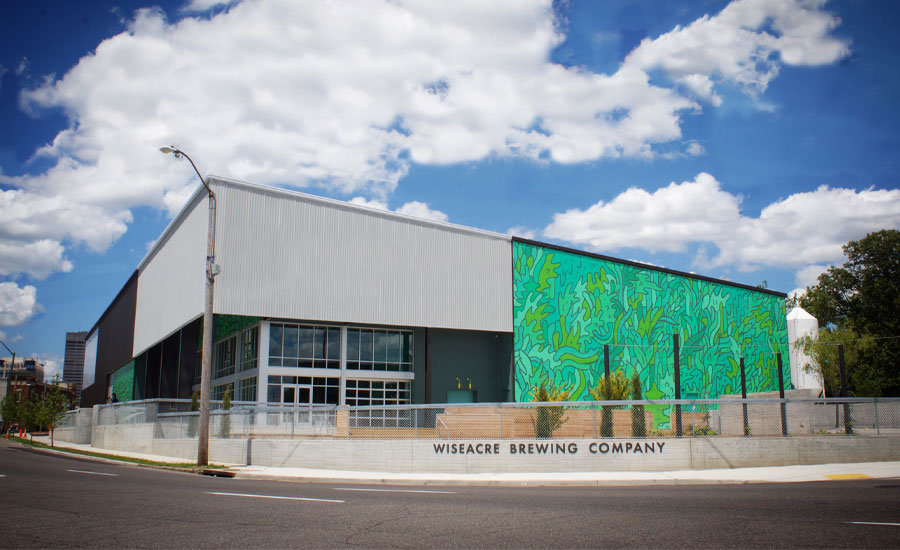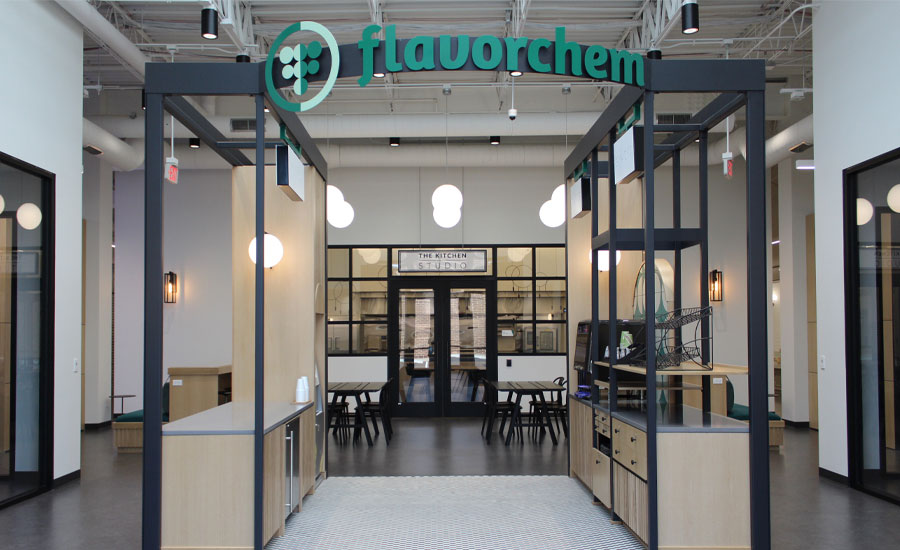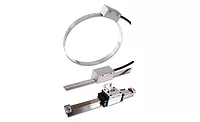Beverage businesses build, expand facilities for expansion
Building for the future

As a result of the pandemic, it’s been a roller coaster year for all players in the beverage industry, which could make it difficult for operations to decide when — or if — facility expansion is the right move. However, others are pressing on, doing so strategically to optimize new facility efficiency and mitigate any risks.
In its annual review of total capital projects in North America’s food and beverage sector, released in January, Jacksonville, Fla.-based market intelligence firm SalesLeads reported that there were 872 food and beverage facility projects in 2020, which was down 9% from 2019, likely the result of changes in capital spending plans.
Chet Willey, owner of Chet Willey Associates, Arlington, Texas, notes that the pandemic has impacted future beverage facility builds. One facet that has been impacted is hiring, and Willey notes that it has been more difficult lately to hire qualified warehouse workers in markets where there are fulfillment centers like Amazon.
“[Fulfillment centers] have been expanding and paying a minimum of $15/hour,” he says. “Some distributors also are adding automation in the warehouse to reduce personnel requirements.”

Image courtesy of WISACRE Brewing Co.
Jack Holleran, president at St. Louis-based HDA Architects, says the biggest impact he’s seen the pandemic have on beverage facility builds involves the office design.
“[Office design involves] creating a plan to accommodate remote working with video conferencing and team meetings,” he says. “[This includes] large meeting rooms with space to accommodate separation.”
Lloyd Snyder, senior vice president at Woodard & Curran, Portland, Maine, adds that when a company builds a new facility, it is usually to enter a new geography, to improve labor options (skill/education levels and population growth) as well as to improve product distribution.
Due in part to the pandemic, Woodard & Curran’s clients in the retail space for prepared foods experienced production demands so high that maintenance and capital spend went down, Snyder says.
“There was no time to integrate new operations due to lack of down time,” he explains. “Production demand is so high that management staff is being asked to operate the manufacturing lines in some cases to keep operations going.”
Snyder adds that the labor shortages seen across the country are making the competition for talent a critical deciding factor in locating new facilities.
“We also see aging infrastructure and a hostile, non-business friendly regulatory environment being a driving factor,” he says.
He adds that clients in the foodservice space saw production demand fall as much as 75%. The lowered demand at restaurants and fast-food establishments has shut down those lines as they have shifted to retail. However, he notes that things are beginning to bounce back.
“In April 2021, we are seeing an uptick in demand, and it appears to be about 50% production as compared to pre-Covid volumes,” he says. “Space and operator interaction has become very important. Clients are looking at automation as a way to reduce the human interaction in manufacturing and reduce risk of coronavirus transmission.”

Image courtesy of Flavorchem
Building for better
New facility builds require a broad range of considerations, but experts note these considerations have grown exponentially — especially because of social distancing guidelines and other needs being taken into account.
In the current climate, Snyder says companies that need larger square footage or a highly customized facility are opting for new facilities. In some cases, large companies are consolidating their smaller inefficient facilities into a large world-class facilities.
“In other cases, a company is seeking to add more production into a geography that they previously underserved and are seeing improved distribution costs,” he says. “Large multinational companies are building greenfield sites to expand capacity due to the surges in demand and the ability to easily create efficient manufacturing lines.”
Despite the outlying impact of the pandemic, Willey Associate’s Willey notes that continued SKU growth remains one of the primary reasons for facility expansions. This takes a company’s current performance and long-term projections into consideration.
“A warehouse design and layout that increases picking productivity [is important],” he says. “This might include automated stretch wrappers and layer pickers that can average 1,500 cases
per hour.”
One of the most common requests Willey receives from beverage manufacturers and distributors when planning for a new facility is for more truck dock receiving and shipping doors.
“This is due to more delivery volume moving from side loaders to end loaders,” Willey explains. “[They need] more space for staging products so they can move more of the picking operation to dayshift.”
To improve efficiencies, HDA is looking into solar panels on the roofs, HVAC and electrical design, Holleran says.
Similarly, Woodard & Curran’s Snyder notes that water, wastewater and power are important factors to consider in the building and planning of new facilities, as these infrastructure costs can add significant cost to new facility construction.
Companies also are more committed to sustainability, with 75% of beverage companies indicating its importance, compared with the less than 10% that were seeking this attribute 15 years ago, Snyder says.
He attributes this to consumer conscientiousness of the environmental impact of the products they buy, government incentives for sustainable production, and an increase in energy and raw material costs that prompts companies to look for waste minimization, energy efficiency and water efficiency.
“A facility’s infrastructure needs to be built with planning for water reuse and alternative energy,” he says. “Infrastructure to segregate wastewater streams can be beneficial to economical water reuse treatment processes.”
Yet, to bring these “outside services” to a new facility, significant planning and negotiations are key, Snyder says.
“Community and state economic development arms are increasingly playing a role in bringing a new facility to a community, and incentive packages can help a company reduce the initial capital requirements,” he explains.
Although the resulting new property is highly customized, facility customization requires a design process that should be flexible and innovative.
However, Snyder points out that many mid-sized food and beverage companies are tasked with renovating previous buildings. “This is due to the high costs to build a new facility,” he explains.
Snyder also notes that the mergers and acquisitions (M&A) activity tends to impact future beverage facility builds ― usually slowing spending down initially at an acquired site due to changes in strategic direction.
“The end result in the long term usually is increased capital spending within three years as the new owners ‘invest’ into manufacturing capacity in the acquired brand,” he says. “We have noticed a slowdown in M&A activity with the pandemic.”
Solid structure from the inside out
An essential aspect of any new facility build, infrastructure development, which includes power, water, wastewater and other utility needs, is a hot topic, according to Snyder.
“Optimizing around the right energy sources for the optimal production solution is very important,” he says. “Many facilities’ energy plans revolve around the energy availability for the new plant. If the preferred energy source is not available, we often get involved in discussions with the providers in the area. Often, expedited permitting is also an ‘ask’ to accelerate construction for the new facility.”
With so many considerations involved, bringing in an architectural-lead to design builds results in a better project for the client, Snyder notes.
“Contractor-lead design-build (DB) focuses excessively on cost and schedule, but this is not what drives long-term success,” he says. “Focus is balancing functionality and costs. Many DB firms have added cost-estimating professionals that aid in more accurate budgeting for projects. Architecture/engineering firms will develop a highly functional, optimized and efficient plant. This is what is needed for long-term success.”
HDA’s Holleran notes that having an architectural-lead can help encourage the following factors:
- Earlier and more accurate budgeting and scheduling
- Shortened design and construction time
- Team-based, non-confrontational collaboration among the design team and contractors
- Complete continuity throughout the process that preserves the design intent
- A high level of quality control with the architect monitoring the construction while representing the owner’s interest
- More direct communication and fewer involved parties
- Complete integration of design, construction and technical infrastructure
One problem with current facilities, however, is that they are antiquated and have nowhere to expand, a problem that can often be avoided when there is a plan for growth, especially within the initial layout, Holleran says.
“[This can be helped by] consolidating into one state-of-the-art distribution facility strategically located for the new market area and purchasing enough ground for future expansion of parking and building,” he says.
Looking for a reprint of this article?
From high-res PDFs to custom plaques, order your copy today!







